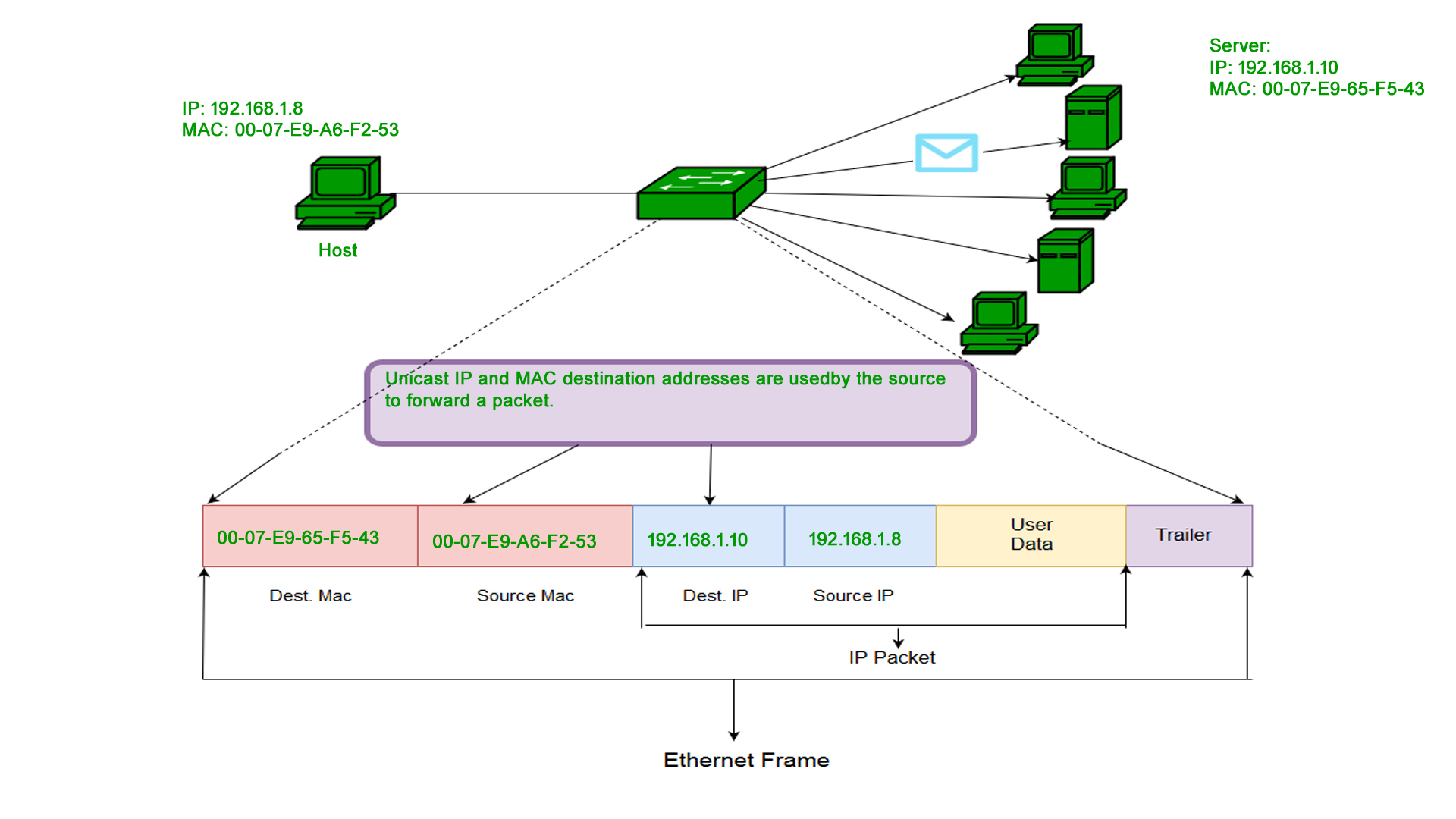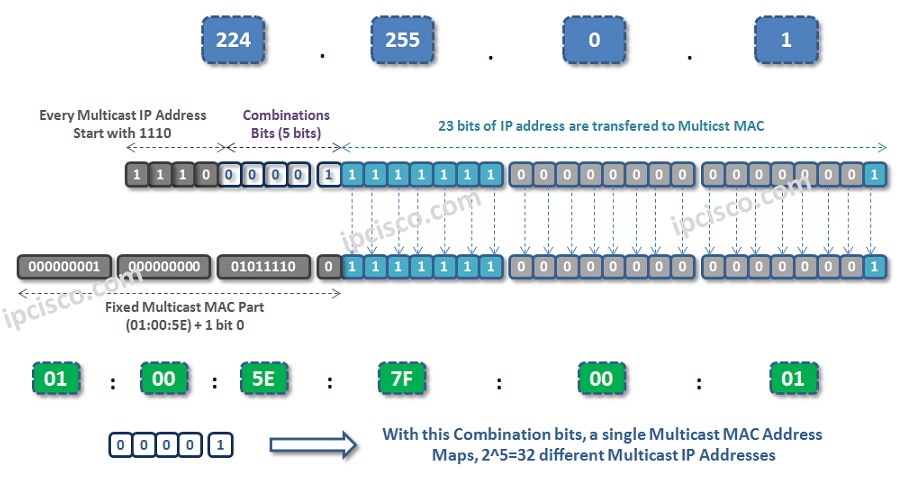Mac Address For Multicast Packets
Download now the serial number for Adobe Photoshop Extended CS5 (Mac). All serial numbers are genuine and you can find more results in our database for Adobe software. Updates are issued periodically and new results might be added for this applications from our community. Serial key photoshop cs5 for mac. Photoshop CS5 Keygen is an illegal hacked version of Photoshop CS5. Using such software, you put in danger not only your PC but also yourself. In this article, I will cover why you shouldn’t use Photoshop CS5 Keygen and what other alternatives you have.
Since a multicast address begins '1110' (128+64+32+0 = 224), a packet sent to a an IP address beginning 1110 is destined for a multicast address. Therefor, a packet matching the mask 224.0.0.0/4 is destined for a multicast address. This display filter should therefor filter packets to multicast addresses only: ip.dst224.0.0.0/4. With IP multicasting the hardware multicasting MAC address is mapped to an IP Address. Once Layer 2 (Datalink) picks the multicast packet from the network (because it recognises it, as the destination MAC address is a multicast) it will strip the MAC addresses off and send the rest to the above layer, which is the Network Layer.

IP multicast is a method of sending Internet Protocol (IP) datagrams to a group of interested receivers in a single transmission. It is the IP-specific form of multicast and is used for streaming media and other network applications. It uses specially reserved multicast address blocks in IPv4 and IPv6. Protocols associated with IP multicast include Internet Group Management Protocol, Protocol.
This tutorial explains the MAC (Media Access Control) address in detail. Learn what the MAC address is, how it is formed, and the types of MAC addresses (unicast, multicast, and broadcast).
In network, an address provides a unique identity to an end device. Unless an end device has a unique address, it can’t communicate with other devices in the network. A unique address enables an end device to send and receive data in the network.
In the LAN network, a unique address is the combination of two addresses; software address and hardware address.
But, if the server sends two packets of same data with destination MAC addresses as the MAC addresses of two computers, it is not multicast but unicast. You can see that from below image, server is sending multicast packets with destination layer 3 multicast address as 239.10.10.10 and destination layer 2 multicast address as 01:00:5e:0a:0a:0a. Duplicate Multicast Packets. Duplicate multicast packets are symptoms of several things: An ethernet-level device (e.g. Bridge) that doesn't understand multicast so reforwards it. This is easy to track to the right subnet using mtrace's packet statistics, but hard to track to the final device because it doesn't change the ethernet source address.
Addressing in Networking Reference models

A networking reference model defines the standards, characteristics, definitions, and functionalities of the network. There are two popular networking models; the OSI Seven Layers model and the TCP/IP model.
In both models, the software address and hardware address are defined in the network layer and data link layer, respectively. In both models, the network layer and data link layer stand on the third and second positions, respectively. Because of this, both layers are also known as layer 3 and layer 2, respectively.
Companion macOS application for the iLok software protection system. ILok is a protection solution aimed at software developers that stores the licenses on a USB device, allowing the user to. You have to enable javascript in your browser to use an application built with Vaadin.  Computer running Mac OS X 10.7 or higher, or Windows 7 or higher, to use iLok License Manager: Available USB port: iLok account (create a free account) License(s) for the iLok-protected software you want to use: Software that is iLok-protected.
Computer running Mac OS X 10.7 or higher, or Windows 7 or higher, to use iLok License Manager: Available USB port: iLok account (create a free account) License(s) for the iLok-protected software you want to use: Software that is iLok-protected.
Software address
The software address is also known as the network layer address or layer 3 address. This address is manageable and configurable. Based on network requirements and layout, this address can be configured and assigned to an end device. Almost all modern LAN implementations use the IP protocol in the network layer. The IP protocol uses the term IP address to define the software address.
I have already explained IP addresses in the following tutorial.
In this tutorial, I will explain the hardware addresses in detail.
Hardware address
The hardware address is also known as the data link layer address or layer 2 address or MAC (Media Access Control) address. From these terms, the term MAC address is commonly used to refer to the hardware address. Unlike the IP address or software address, this address can’t be configured or managed. When you purchase a new NIC (Network Interface Card), or any device which has onboard NICs, it comes with a pre-configured MAC address.
A MAC address is 6 bytes (48 bits) long address in the binary numbers. MAC addresses are written in the hexadecimal format. The hexadecimal format uses the base-16 to refer to numbers. If we divide the total available length (48 bits) in binary numbers by the base (base-16) that is used to write a number in hexadecimal format, we get the total digits (12 = 48 ÷ 16) of that number in the hexadecimal format. Thus, if we write a 6 bytes (48bits) long binary MAC address in hexadecimal format, we get a 12 digits long hexadecimal number.
For convenience and easier readability, when writing a MAC address in hexadecimal format, extra space or periods or colons are added after every two or four digits. For example, you can write a MAC address in the following ways.
- Without any separator: - 00000ABB28FC
- Extra space after every two digits: - 00 00 0A BB 28 FC
- Extra space after every four digits: - 0000 0ABB 28FC
- Colon after every two digits: - 00:00:0A:BB:28:FC
- Colon after every four digits: - 0000:0ABB:28FC
- Period after every two digits: - 00.00.0A.BB.28.FC
- Period after every four digits: - 0000.0ABB.28FC
No matter which style you use to write the MAC address, or an application or networking software uses to display the MAC address, a MAC address is always processed in binary numbers only. NIC converts hexadecimal numbers of the MAC address in binary numbers before processing and using it.
Structure or format of the MAC address
As mentioned above, you can’t assign MAC address to a NIC or onboard NICs. When you purchase a new NIC or a device with onboard NICs, it arrives with a pre-configured MAC address or MAC addresses, respectively. Before we understand how manufacturers select MAC addresses for NICs, let’s briefly understand why a MAC should be unique in the LAN network.
If a LAN network has two or more NICs configured with the same MAC address then that network will not work. Let’s understand this with an example.
Suppose in a network three PCs; PC-A (11000ABB28FC), PC-B (00000ABB28FC) and PC-C (00000ABB28FC) are connected through a switch. NICs of PC-B and PC-C have the same MAC address 00000ABB28FC.
If PC-A sends a frame to the destination MAC address 00000ABB28FC, the switch fails to deliver this frame as it has two recipients of this frame.
The following image shows this example.
Mac Address For Multicast Packets Ip
A LAN network does not work unless each device in the LAN network has a unique MAC address.
Now let's be back to our main question. How do manufacturers assign a unique MAC address to each NIC?
Before manufacturing NICs, every manufacturer obtains a universally unique 3-byte code, known as the organizationally unique identifier (OUI), from the IEEE. The IEEE is an international organization that regulates and maintains the namespace of MAC addresses.
Multicast Mac Address Mapping
After obtaining the OUI bytes, the manufacturer uses these OUI bytes at the beginning of the MAC address of all its NICs or on-board NIC devices. The manufacturer also assigns a unique hexadecimal value in the remaining bytes.

6 bytes MAC address = 3 bytes OUI number obtained from the IEEE + 3 bytes unique number assigned by the manufacturer
MAC addresses of all NICs or onboard NIC devices manufactured by the same manufacturer always start with the same 3-bytes OUI numbers. For example, suppose the IEEE assigns an OUI “0000AA” to the xyz company. Now the xyz company will use the OUI number 0000AA as the first 24 bits to build MAC addresses for its NICs or onboard NICs devices.
To keep each product separately from others, the manufacturer uses the remaining 3-bytes. Manufacturers are free to use any sequence or method on the remaining three bytes. For example, the xyz company can assign the MAC addresses to its NICs in the incremental order.
The following table extends this example and adds two more demo companies (ABC and JKL) in the example. It also shows MAC addresses of 5 NICs from each company.
Thus, this procedure ensures that no two NICs use the same MAC address in the universe.
Types of MAC address
There are three types of MAC address; unicast, multicast, and broadcast.
Unicast MAC address
Unicast MAC address represents a specific NIC or onboard NIC ports in the network. The inbuilt MAC address of a NIC is the unicast MAC address of that NIC.
Multicast MAC address
Multicast MAC address represents a group of devices (or NICs in Layer 2). The IEEE has reserved the OUI 01-00-5E (first 3-bytes or 24 bits) for the multicast MAC addresses. The remaining 24 bits are set by the network application or device that wants to send data in the group. A multicast MAC address always starts with the prefix 01-00-5E.
Multicast Address Example
Broadcast MAC address
Broadcast MAC address represents all devices in the network. The IEEE has reserved the address FFFF.FFFF.FFFF as the broadcast MAC address. Any device that wants to send the data to all devices of the network, can use this address as the destination MAC address.
That’s all for this tutorial. If you like this tutorial, please don’t forget to share it with friends through your favorite social channel.

